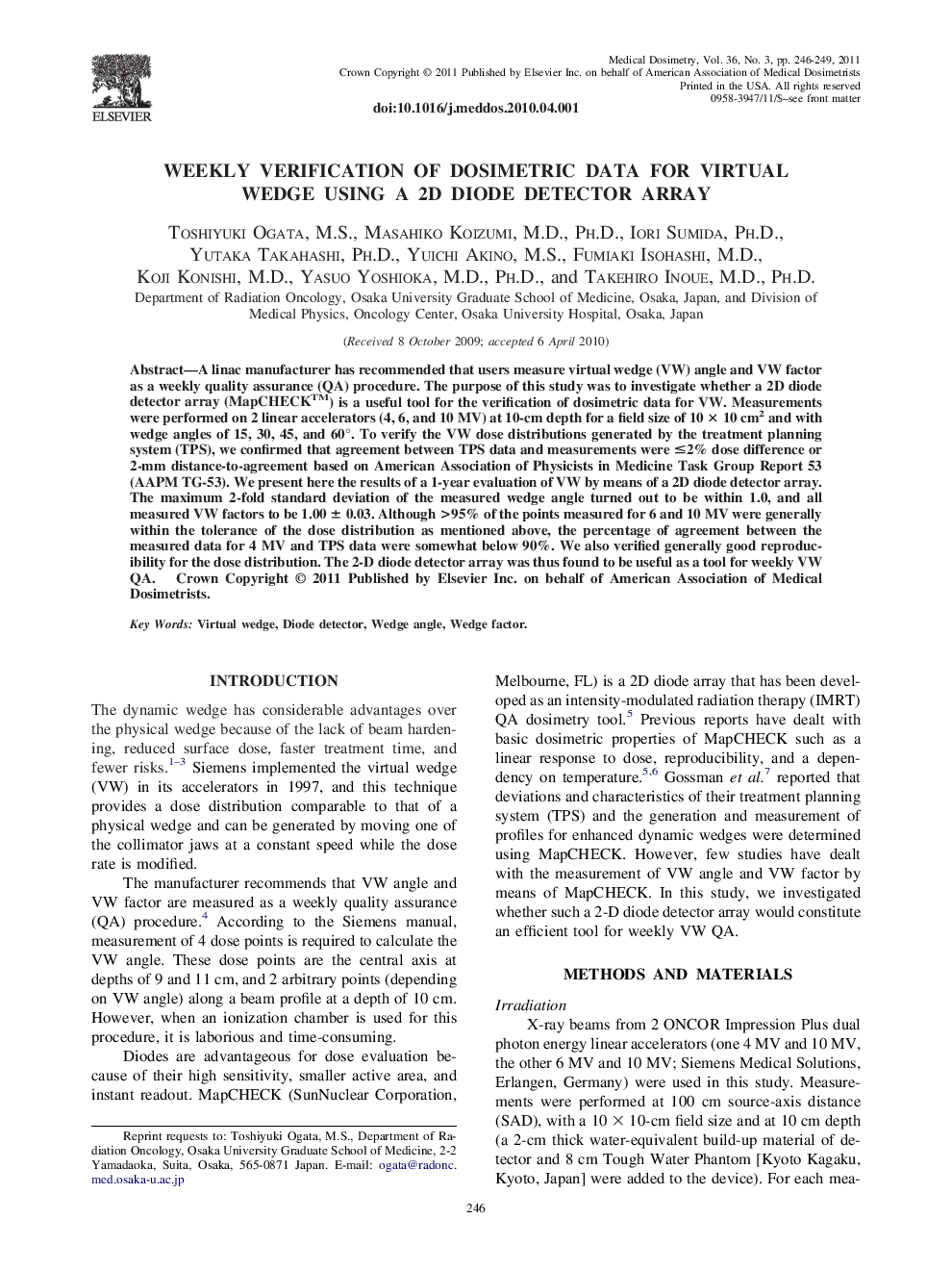| Article ID | Journal | Published Year | Pages | File Type |
|---|---|---|---|---|
| 1885228 | Medical Dosimetry | 2011 | 4 Pages |
Abstract
A linac manufacturer has recommended that users measure virtual wedge (VW) angle and VW factor as a weekly quality assurance (QA) procedure. The purpose of this study was to investigate whether a 2D diode detector array (MapCHECKâ¢) is a useful tool for the verification of dosimetric data for VW. Measurements were performed on 2 linear accelerators (4, 6, and 10 MV) at 10-cm depth for a field size of 10 à 10 cm2 and with wedge angles of 15, 30, 45, and 60°. To verify the VW dose distributions generated by the treatment planning system (TPS), we confirmed that agreement between TPS data and measurements were â¤2% dose difference or 2-mm distance-to-agreement based on American Association of Physicists in Medicine Task Group Report 53 (AAPM TG-53). We present here the results of a 1-year evaluation of VW by means of a 2D diode detector array. The maximum 2-fold standard deviation of the measured wedge angle turned out to be within 1.0, and all measured VW factors to be 1.00 ± 0.03. Although >95% of the points measured for 6 and 10 MV were generally within the tolerance of the dose distribution as mentioned above, the percentage of agreement between the measured data for 4 MV and TPS data were somewhat below 90%. We also verified generally good reproducibility for the dose distribution. The 2-D diode detector array was thus found to be useful as a tool for weekly VW QA.
Keywords
Related Topics
Physical Sciences and Engineering
Physics and Astronomy
Radiation
Authors
Toshiyuki M.S., Masahiko M.D., Ph.D., Iori Ph.D., Yutaka Ph.D., Yuichi M.S., Fumiaki M.D., Koji M.D., Yasuo M.D., Ph.D., Takehiro M.D., Ph.D.,
